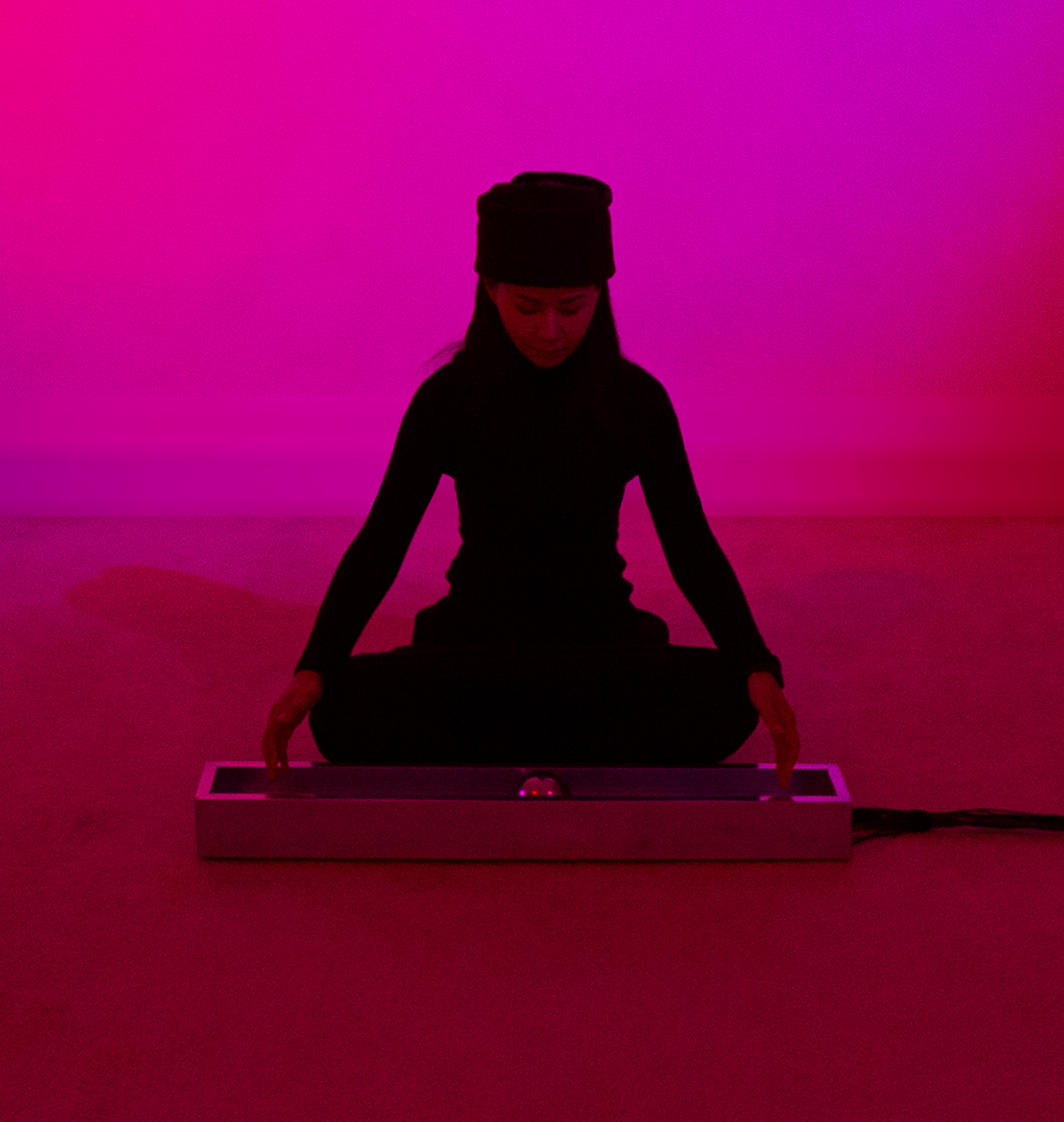
JUNG HEE CHOI
Seven (2024)
on
Walter de Maria
Instrument for
La Monte Young (1966)
Avant-Première
Performed by Jung Hee Choi
using Walter De Maria's sculptural Instrument for La Monte Young (1966)
INTERMISSION
LA MONTE YOUNG
STUDIES IN THE BOWED DISC (1963)
on
Robert Morris
Gong for
La Monte Young (1963)
Performed by La Monte Young and Jung Hee Choi
using the gong designed and constructed by Robert Morris (1963)
—
January 18 and 25, 2025, at 7 pm
MELA Foundation Dream House
275 Church Street, 3rd Floor, New York
Admission, $49. MELA Members, Seniors, Student ID, $39.
Limited seating. Advance reservations recommended.
Info and reservations: mail@melafoundation.org Tel: 917-603-9715
GET TICKETS HERE
Join us for the final live concert of our extraordinary four-concert series, celebrating both the 89th birthday of La Monte Young (born October 14, 1935) and the 31st consecutive year of the MELA Dream House Sound and Light environment. This program will feature two live performances, each utilizing the metallic bodies of the original instruments designed and built for Young by his early close collaborators, artists Walter De Maria (1935-2013) and Robert Morris (1931-2018).
89 and 31 are both prime numbers, and prime numbers (as manifested in the musical domain by numerically expressible frequency relationships among two or more "well-tuned" sounds) have been an elemental source of inspiration for Young throughout his career as a composer.
The music on the four programs emerges from the historically crucial period during the middle of the twentieth century (coinciding with La Monte Young's years as a student and budding master) when certain like-minded musicians—trained in the Western tradition but working under a novel aesthetic aegis famously expressed by Edgard Varèse as "the liberation of sound" and by John Cage as "letting sounds be themselves"—first began to move beyond the limits of a fixed-pitch scale system, to recognize and explore the musical properties inherent in everyday sounds (in other words, "noises").
The series also celebrates the spirit of shared purpose and collaboration in that ecosystem, made tangible in the fruits of creative relationships that are sometimes mentor-to-student (as between Richard Maxfield and La Monte Young or between Young and Jung Hee Choi) and sometimes peer-to-peer (as with Young and his fellow avant-garde travelers Robert Morris, and Walter De Maria). By no means is that history over, however: While each concert is an "event" in the conventional sense, we can—as we contemplate the contributions, influences, reactions, and counter-reactions of these independent artists at independent moments in time—gain a palpable sense of history as a living organism, unfolding over periods of years or even decades.
Seven (2024)
on
Walter De Maria
Instrument for
La Monte Young (1966)
Avant-Première
Performed by Jung Hee Choi
using Walter De Maria's sculptural Instrument for La Monte Young (1966),
with pre-recorded digital sound montage and real-time digital processing
on an algorithm by Jung Hee Choi.
Digital processing programmed by Mason Mann.
Studies in the Bowed Disc (1963)
on
Robert Morris
Gong for
La Monte Young (1963)
Performed by La Monte Young and Jung Hee Choi
using the gong designed and constructed by Robert Morris (1963)
Jung Hee Choi is an artist/musician and has presented Ahata Anahata, Manifest Unmanifest (2007– ), a series of environmental compositions with light, evolving light-point patterns, drawing, incense, performance, and sound. Her work has been presented in the United States, Europe, and Asia including FRAC Franche-Comté, France; Berliner Festspiele, Bundeskunsthalle, Germany; Galerie l'elac, Lausanne, Switzerland; Dia Art Foundation, Guggenheim Museum and MELA Foundation Dream Houses, NYC; FRESH Festival, Bangkok; Korea Experimental Arts Festival. Commissioned by MELA Foundation, her video sound performance and installation, RICE, was chosen as one of The 10 Best of 2003 in the December Artforum. The New York Times wrote about Choi's multimedia installation Ahata Anahata, Manifest Unmanifest IX at Dia 15 VI 13 545 West 22 Street Dream House, NYC, "With extended listening, what at first seemed mechanically repetitious turns out to be a complex interweaving of different, slowly oscillating pitches. If you give in to it while watching Ms. Choi's hallucinatory screen, you may find yourself in an altered state of consciousness, on the verge of some ineffable, transcendental revelation." Choi is the senior disciple of La Monte Young and Marian Zazeela. In 2002, she co-founded, with Young and Zazeela, The Just Alap Raga Ensemble and, in 2009, The Sundara Trio. Choi's electroacoustic and modal improvisation ensemble, The Sundara All Star Band, premiered in 2015. The members include Young, Zazeela, Choi, Jon Catler, Hansford Rowe and Naren Budhkar. The New York Times listed Choi's Tonecycle for Blues performed by her Sundara All Star Band as one of The Best Classical Music Performances of 2017. Choi's work is in the collection of the FRAC Franche-Comté and Dia Art Foundation. Since 2009, Choi's long-term multimedia installations have been presented both solo and simultaneously with Young and Zazeela's sound and light in the MELA Dream House, creating a continuous collaborative environment.
MELA's programs are made possible with public funds from the New York State Council on the Arts, with the support of the Office of the Governor and the New York State Legislature, and generous contributions from individuals and MELA Members.
